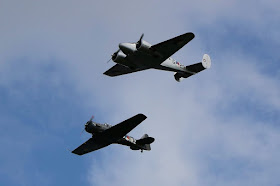I found that only a few km’s away from where I live, there is a tiny
radiomuseum called "De Stove" in the town of Achthuizen. Owner and builder Jan Dekkers has
collected tube radios for many years. In his collection one can find one- and
two-valve (‘lamp’) radios, lots of Philips tube radios, home built devices and
even a small AM transmitter. The art deco interior and nostalgic decoration of
the museum takes you back in time.
The address of the museum is Achthuizensedijk 12, Achthuizen
(The Netherlands). Opening times are 13:00-16:00 hr. each Saturday afternoon.
Interior radiomuseum "De Stove"
Founder Jan Dekkers
Medium Wave receiver
Attic of the museum
Home built 2-valve radio
Home built AM transmitter
Collection Erres radios
Achthuizen (Goeree-Overflakkee)
Published in "QRP Nieuwsbrief" Nr. 162, June 2017

























































